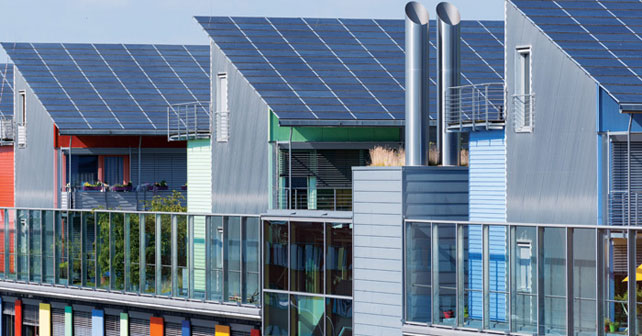
Vehicular emission are a serious issue globally, and manufacturers are not only developing alternate fuel technology but also optimizing and making the current production models more energy efficient. But, that’s considering just the vehicles alone. What about the manufacturing facilities? If you look at vehicle manufacturing from a macro perspective, it has a huge impact on the environment – right from the sourcing of raw materials, to the supply chain, to the functioning of the factories themselves – and, subsequently, the vehicles they produce. No wonder, then, that Green Peace is getting increasingly pissed about the situation worsening with every passing day.
Imagine, then, if even one of the links in the entire chain became 100% energy efficient – that’ll be a massive reason for Mother Earth to smile, and a huge favour that we’ll do to ourselves. The creepy dudes at Green Peace would even give you certificates to flaunt! Your life would be so complete. Well...
No, seriously, imagine if a really massive production unit actually goes ‘green’ – that’ll be mega news. For everyone. Really. And it’s not that difficult either – Toyota is already leading the way. Just a few days after the previous issue went into print, Toyota announced that its engine production facility in North Wales will harvest solar power for almost 10% of its total power needs. That may not sound like much, but put the index finger on your lip, form lines on your forehead, and pretend to think really hard – and you may be able to make some sense of the immense savings to be made.
There’s an array of 13,000 solar panels that are installed at Toyota’s Deeside factory by British Gas, and the entire setup can produce up to almost 3.5 million kWh of energy per year. That’s enough to produce as many as 22,500 engines. Or, to put it into perspective, it’s the amount of energy required to light up the homes of all 570 Deeside plant workers for almost 2 years. Better still – just a one-hour operation of the solar array will produce enough electrical supply to power an average British house for 44 days. One hour of operation, and forty-four days of electricity!
The solar array is made up of 12,680 photovoltaic panels and will, according to Toyota, have a life span of over 25 years. It’s also mostly maintenance free. Its operation will result in a total energy saving of about 1,800 tonnes of carbon-dioxide. That’s the same as the weight of 1,263 Toyota Auris hatchbacks. Which is huge!
That’s not all. This engine manufacturing plant is responsible for producing petrol and petrol-hybrid engines (35% of all engines built are hybrids), which get exported all over the world – including Brazil, Japan, Europe, Turkey, and South Africa, to name a few. Now, hybrids are cleaner than regular IC engines – so, really, the combined energy savings from the Deeside plant is of massive proportions. The same facility also recycles rainwater, and sends no waste to landfills or incinerators.
Sure, it’s not the ‘dream’ facility that runs completely on solar power all the time, but at least it’s a solid start. In fact, Toyota’s Burnaston factory in Derbyshire has been harnessing solar power as a renewable energy source since 2011. But this is just a couple of examples. Imagine what a gigantic difference it’ll make to the environment if all factories across all industries started harvesting solar energy for even a fraction of their energy needs. Or, better still, for 100% of their energy needs. Now that’ll make Green Peace (very) happy, I’m sure. Hope they’ll let us drive our organic, fun machines then.























Write your Comment